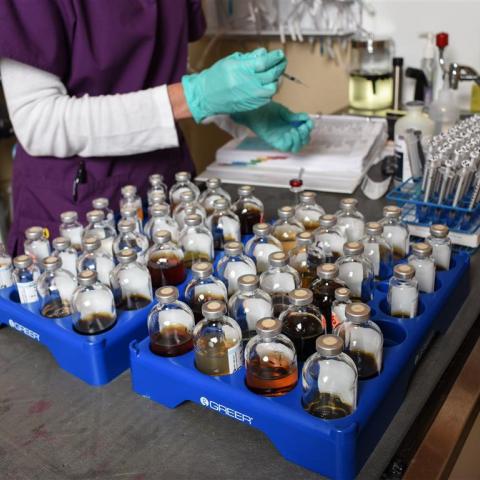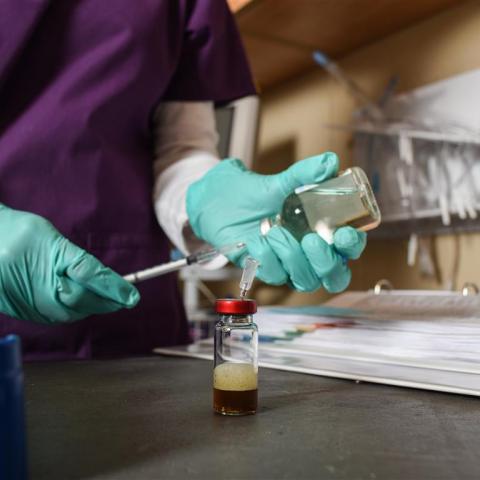Environmental (pollen, dust, dander) allergies are a common cause of itch and recurrent skin infections in animals. In order to diagnose environmental allergies, other causes of itch including food allergy and parasite need to be ruled out. Once a diagnosis of environmental allergies is made, then allergy testing can be performed to identify what is causing the symptoms and begin desensitization. This therapy is one of the safest ways to treat environmental allergies.
Which patient should have allergy testing performed?
Patients that have undergone a thorough workup to rule out conditions that can cause similar clinical presentation and itching including food allergy, parasites, and dermatophyte.
Why perform allergy testing on my pet?
Environmental allergies are lifelong, and often require interventions to manage your pet’s itch and recurrent skin and ear infections. Allergy testing and allergen immunotherapy (similar to what is done in humans) is one of the safest ways to treat and manage this common disease.
How is allergy testing performed?
Intradermal or skin allergy testing is considered the “gold standard” for the identification of environmental triggers and treatment of environmental allergies (atopy) such as pollen, grass, dust, and molds. After a mild sedative is administered to the pet, allergens are injected under the skin and observed for a red, raised reaction. Small amounts of the allergens that the pet reacts to are then formulated into a desensitization vaccine (allergen), which is administered by injections under the skin (easily given by the owner at home) once every 1-2 weeks, or can be given orally daily (sublingual immunotherapy).
Intradermal allergy testing is more sensitive than blood allergy serum panels for the identification and management of environmental allergies. Currently, blood allergy serum panels and intradermal testing is NOT useful in the diagnosis and management of food allergies. Saliva testing is not currently recommended or supported by evidence-based research.
What happens once the test is done?
The goal of desensitization is to adjust the abnormal immune response to environmental allergens, in order to decrease symptoms and need for other medications, and in approximately 75% of allergic animals, symptoms are improved by 50% or more. Lifelong treatment is usually required. Working with a veterinary dermatologist enables more successful individualized management of allergy immunotherapy, by adjusting therapy, allergen dose, and frequency depending on the individual animal’s response to treatment.
I want to allergy test my pet, now what?
Allergy Testing Requirements (Prior to Testing)
- Off injectable steroids for 6 to 8 weeks
- Off oral steroids for 2 to 4 weeks (depending on severity of symptoms)
- Off any cortisone or steroid containing eye or ear drops for 10 days
- Off antihistamines (such as Benadryl) for 7 days
- Off fatty acids for 7 days
- Off topical steroids for 7 days
- Off tranquilizers for 7 days
- Pet should not be fed 12 hours before testing (water ok)
The following DO NOT interfere with intradermal allergy testing:
- Apoquel
- Atopica/cyclosporine
- Antibiotics
- Antifungals




